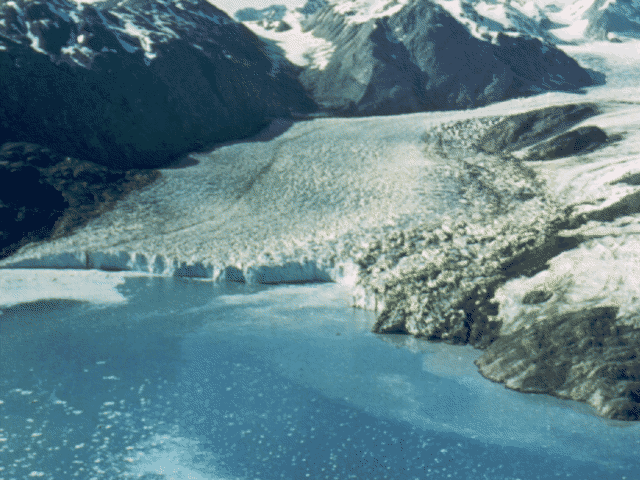Tidewater Glaciers
These are glaciers that flow out into the sea. As the ice moves out over the sea it lacks support from underneath and pieces break off, or calve, forming icebergs. Most tidewater glaciers calve above sea level, with sections of ice falling off the face of the ice, causing huge splashes as the new icebergs strike the water. If the water is deep enough, glaciers can calve underwater. The sudden loss of mass makes the remaining glacial ice much lighter. You know an underwater calving has occurred because the iceberg suddenly shoots up in the water, like a cork out of a bottle.
As tidewater glaciers advance, it push moraine in front of them just like land glaciers do, but instead of being a raised pile in front of the ice, tidewater glaciers create an underwater mound called a moraine shoal. This protects the glacier from the actions of deep tidal water. If the glacier starts to retreat from its moraine shoal, the ice cannot be supported by the deep water behind the shoal and the glacier will calve, producing many icebergs and increasing its rate of retreat. Once the glacier retreats to a stable position where the ice is supported, or strong enough to hold itself together, the calving slows, and the glacier will advance again, gradually pushing a new moraine shoal in front of it.
The longest tidewater glacier in Alaska is the Hubbard Glacier which has a calving face over ten kilometres long. In Alaska tidewater glaciers commonly terminate in a vertical face with ice that extends 200-300 feet above the water line and as much as 1000 feet below water.

![]()
